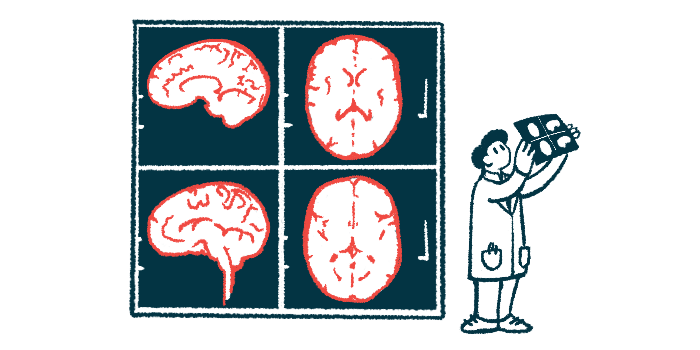AHP diagnosed in young woman with brain swelling, nerve damage
Patient had seizures, hallucinations; also signs of muscle weakness: Case
Written by |

A woman in her 20s was diagnosed with acute hepatic porphyria (AHP) after experiencing seizures and visual hallucinations due to a condition known as PRES, or unilateral posterior reversible encephalopathy syndrome — which causes swelling in one side of the brain — and muscle weakness due to neuropathy, or nerve damage, according to a case study.
The researchers noted that the woman had not previously been diagnosed with any diseases, but then experienced three episodes of seizures and hallucinations in one day, after having abdominal pain several days earlier.
Various tests confirmed the AHP diagnosis, but it took nearly a month of treatment to “[resolve] her seizures and [restore] normal mental status,” the team wrote, noting that “neuropathy improved over three months.”
“The case highlights heightened suspicion for porphyria in unilateral PRES and motor neuropathy with abdominal pain or skin lesions,” the researchers wrote.
The woman’s case was described in “Porphyria presenting as posterior reversible encephalopathy syndrome,” a study published in Acta Neurologica Belgica, the official journal of the Belgian Neurological Society.
Swelling in brain led to headaches, vision problems, confusion for patient
Porphyria occurs when the body lacks one of the enzymes needed to produce a molecule called heme. As a result, the building blocks of heme go unused and accumulate to toxic levels in the body’s tissues and organs.
In AHP, they primarily build up in the liver. AHP symptoms appear suddenly and include abdominal pain, constipation, and anxiety.
Here, the researchers described the case of a young woman who suddenly began having seizures and visual hallucinations. She was then diagnosed with PRES secondary to porphyria. In PRES, high blood pressure, or other triggers, cause swelling in the brain, leading to headaches, vision problems, seizures, and confusion.
The prevalence of PRES in porphyria is unknown but a systematic review reported 46 cases of PRES associated with porphyria. … [Still, unilateral PRES] is rare and unreported with porphyria.
Over the course of three years, the woman had experienced six similar pain episodes to the one for which she now sought treatment. Some of these episodes were accompanied by skin blisters.
On admission to the hospital, she was delirious with unstable blood pressure and heart rate, the researchers noted, and had blisters on her hands and feet.
On the sixth day, the patient began experiencing weakness in the muscles of the head and neck, and her limbs appeared weak and floppy. Tests showed low sodium, high levels of liver enzymes, and dark urine. A brain MRI scan suggested unilateral PRES, and nerve conduction studies revealed signs of nerve damage.
High levels of porphobilinogen and aminolevulinic acid, two heme precursors, confirmed the diagnosis of AHP with unilateral PRES and motor neuropathy. Glucose administered into the bloodstream, along with anti-seizure medications and supportive care, stopped her seizures and restored her mental state in four weeks, the team reported. Her neuropathy also eased, but that took several months.
“The prevalence of PRES in porphyria is unknown but a systematic review reported 46 cases of PRES associated with porphyria,” the researchers wrote. However, unilateral PRES “is rare and unreported with porphyria,” the team added.






